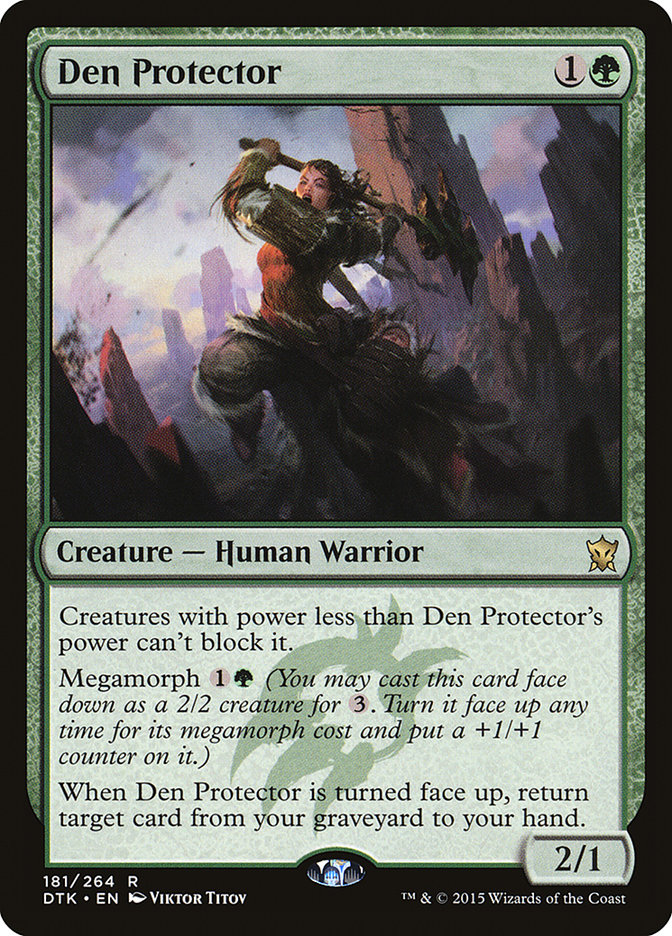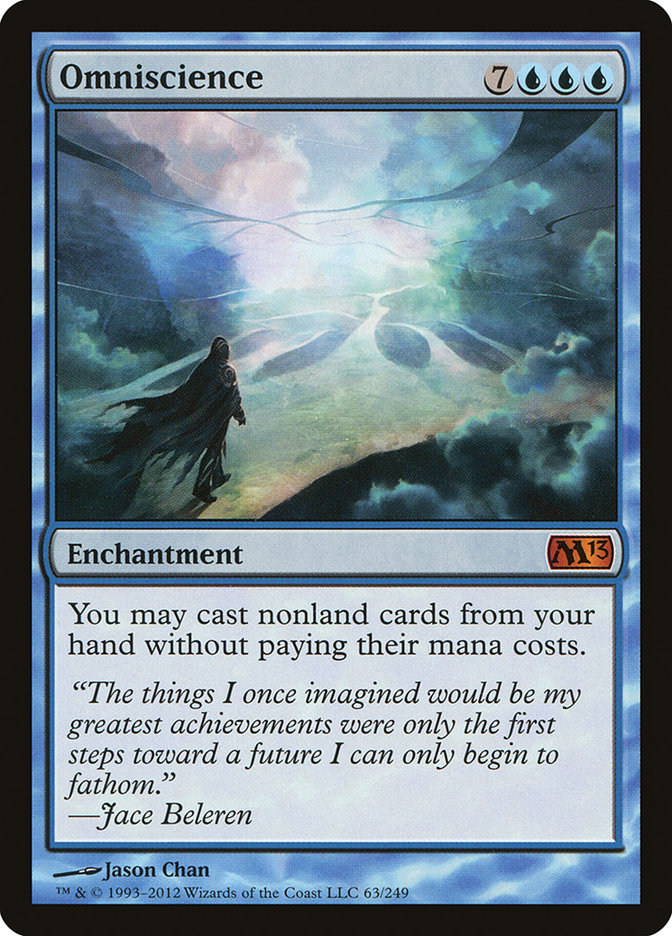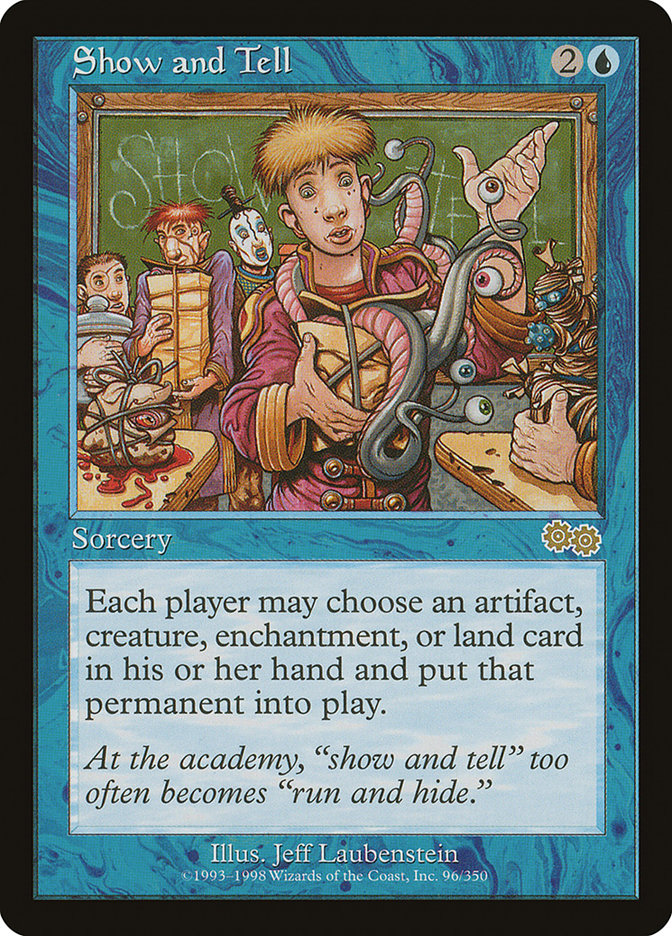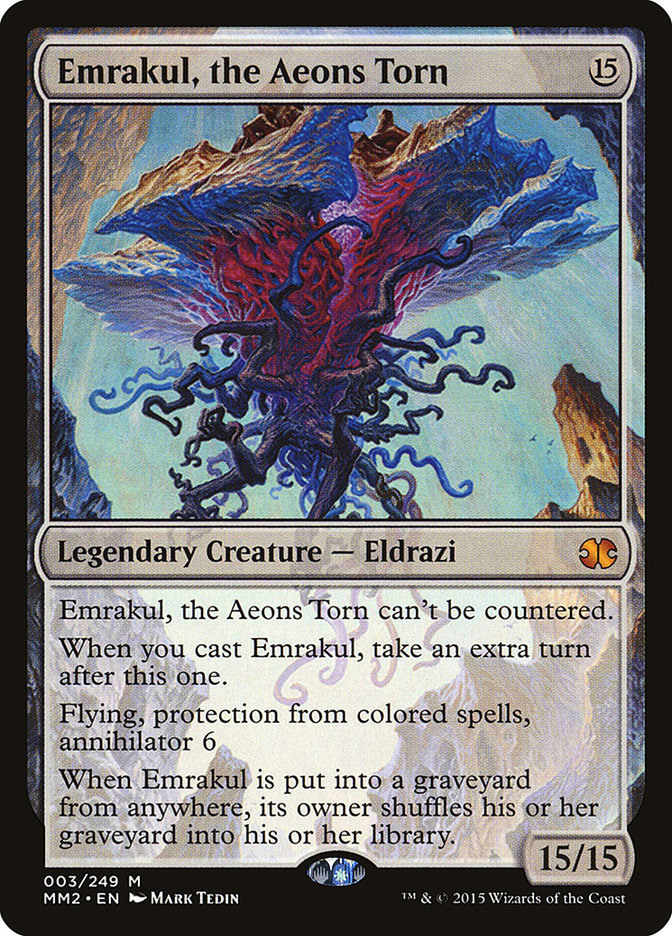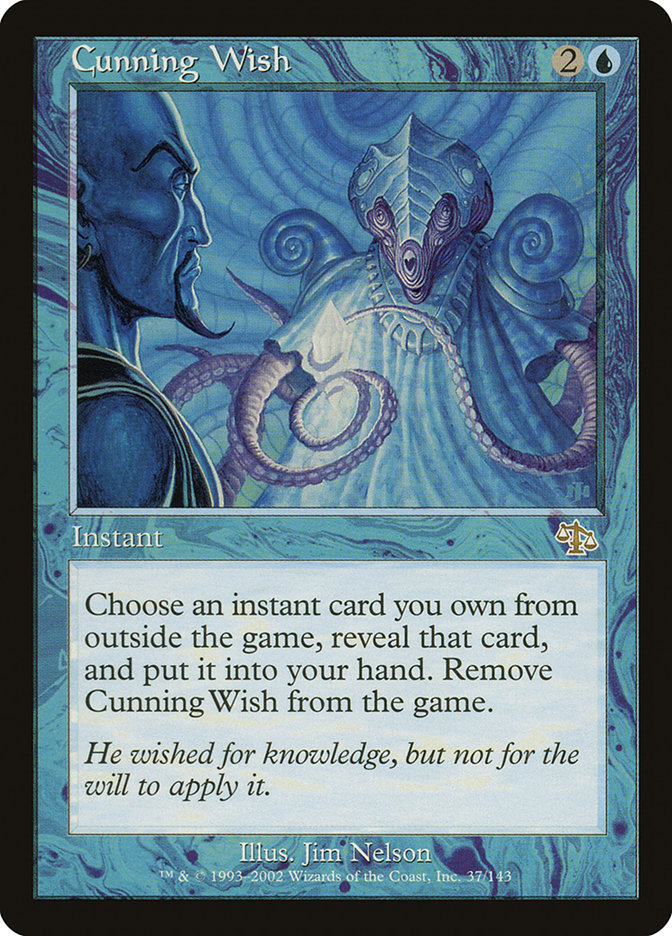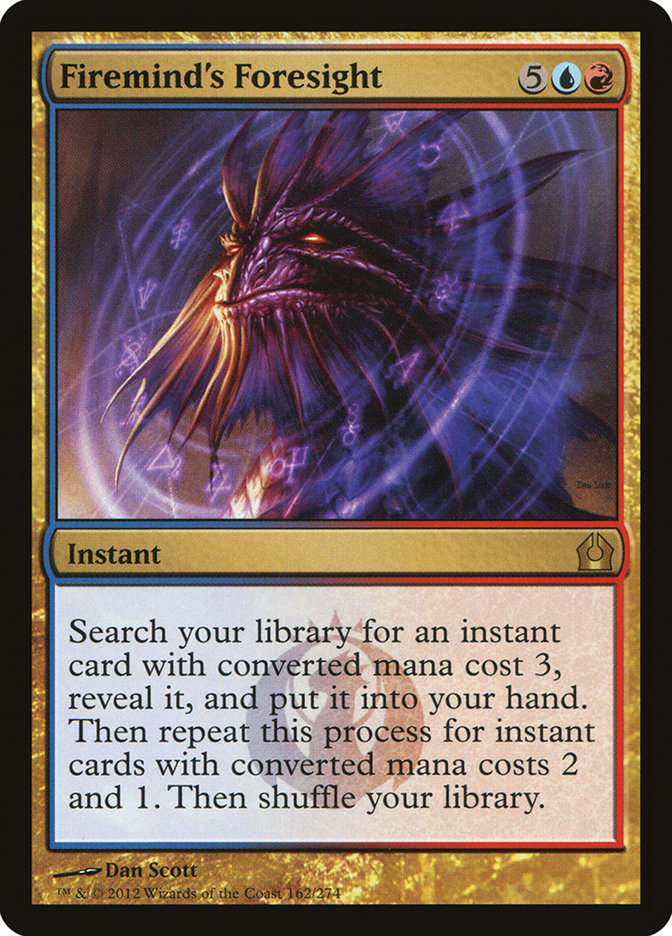The Dragons have done it again.
Many of you might have already guessed who I was rooting for in the Top 8, and watching the finals match, I had a big smile on my face every time I yelled
“BOOM” when Nathan Fabilenia played a Dragonlord Atarka or a Stormbreath Dragon.
I knew that G/R Dragons was going to be the deck of the weekend, hence why I also played it on Saturday and won a Super IQ down in Indian Trail, NC. My
list was slightly off from Nathan’s, and while I can say I’m not in
love with the changes that Nathan made, I am very intrigued by the Genesis Hydras in his maindeck.
Standard may be on the back burner for those of us who are heading to battle in the Open Series in Worcester this weekend, but I do love me some G/R
Dragons, and I’d like to talk a bit about my build and how I see the deck before I jump into some juicy Legacy action.
Creatures (25)
- 4 Elvish Mystic
- 4 Sylvan Caryatid
- 4 Stormbreath Dragon
- 3 Courser of Kruphix
- 2 Ashcloud Phoenix
- 2 Dragonlord Atarka
- 4 Thunderbreak Regent
- 2 Den Protector
Planeswalkers (2)
Lands (24)
Spells (9)

I decided that I wanted to include Den Protector this week. I had been theorycrafting a lot with the card in G/R Dragons, and I felt like it could add
another dimension to the deck that would not only help us against the control decks, but also give us some benefit in the other matchups. Den Protector can
be an early chump blocker against the aggressive decks and let us rebuy impactful spells in the mid to lategame when we draw it. Things like Draconic Roar,
Roast, and Crater’s Claws are all exceptional against decks that are trying to win with non-Dragonlord Ojutai creatures and getting to reuse them can be
invaluable; not to mention that we can even rebuy things like Xenagos, the Reveler, Wooded Foothills, Stormbreath Dragon, or even Dragonlord Atarka.
Overall I was happy with Den Protector, especially in tandem with Ashcloud Phoenix. Multiple opponents played differently against face down morphs not
knowing which one it was, and they both have vastly differing paradigms in terms of how to block them effectively.
The only times I was really unhappy with Den Protector is when I had the heavy mana draws. There were a lot of draws where I had acceleration, one or two
removal spells, and a Den Protector. I really felt like it wasn’t that great in those situations and would rather just have another threat, like Xenagos,
the Reveler or Ashcloud Phoenix, but I feel like those draws are going to be a concession we have to make in order to reap the benefits of the card.
I have been known in the past to forsake the sacred foundation of four copies of Courser of Kruphix, and I decided to give it a shot here this time as
well. The reasons are a bit different though. I never really felt like Courser of Kruphix was exceptional in the G/R or Jund Monsters decks and that, while
it was a good role player and the first one was always great, the additional ones were just never that impactful. In G/R Dragons, I feel like Courser of
Kruphix is exceptional, but it can be a liability with the amount of Dromoka’s Command seeing play. Since Dromoka’s Command is going to be great against us
most of the time no matter what, it may be a little foolish to shave on a Courser of Kruphix because of it, but much like before, it just felt right and
played out great in the matches where I was playing it. Being able to shave on a Courser of Kruphix also frees up another slot in the deck, which is nice.
The big difference between Nathan’s deck and most other G/R Dragons decks are the pair of Genesis Hydras. The Ashcloud Phoenix slot has really been a flex
slot for the most part in the deck, and I have even played Arbor Colossus in that spot the week after I won Syracuse. I do like the idea of Genesis Hydra
and how it plays against the control decks. Four is a pretty sweet spot for Hydra in the deck being able to hit all of our mana creatures, Courser of
Kruphix, Xenagos, the Reveler, and Thunderbreak Regent, but I feel like that’s still a bit lackluster for six mana.
I played Ashcloud Phoenix this weekend, and it was absurdly good. Between Ashcloud Phoenix, Stormbreath Dragon, and Xenagos, the Reveler, we really put
Abzan Control in a tough spot; it requires the exact piece of removal to handle whatever particular threat we are throwing at them. Ashcloud Phoenix is
also pretty good against the control decks and gives us additional flyers to go over the head of the Deathmist Raptor decks.
G/R Dragons is in this very unique place. In metagames where you expect a lot of Esper Dragons, like we saw in the weeks following Pro Tour Dragons of
Tarkir, I honestly feel like this deck is unplayable. We can overload our sideboard with cards like Mistcutter Hydra and more planeswalkers as a way to try
and combat the control decks, but then we’re losing out on other matchups. Even with a dedicated sideboard, I think that it only becomes a close matchup.
Our fundamental strategy of ramping with resilient creatures is just something that is at a disadvantage against the control decks. Now, don’t get me
wrong, you can still find ways to win against those decks. Playing correctly and navigating the game to points where you can gain the advantage is
something that is learned after playing with the deck for some time, but it’s rough for sure.
That being said, when the metagame shifts to combat the control decks with things like Den Protector and Deathmist Raptor along with resilient creatures
like Fleecemane Lion and Rakshasa Deathdealer like we’re seeing right now, I feel like G/R Dragons is the best deck. Matches can still be lost based on
mistakes and lack of familiarity of the deck, and you can still lose to Abzan Aggro or Abzan Control, but I feel like those matchups, all things
considered, are favorable, and since we are ignoring the control decks for the most part, we get to dedicate sideboard slots for those decks (like going up
to four Roast, playing Ashcloud Phoenix, and having access to Hornet Nest).
That’s enough about Dragons though. SCG Worcester is this weekend, and we get to sleeve up our Legacy decks (some double-sleeved since the cards are so
expensive) and battle a great format against some of the greatest Legacy players in the US.
In addition to winning the Super IQ, I also split the finals of the Legacy IQ here at the SCG Game Center with BBD and his Collected Company deck. I’m sure
he will write about it this week, so keep an eye out for that, but I ended up playing Shouta Yasooka’s Omni-Tell deck from GP Kyoto, and it was absolutely
amazing.
Creatures (2)
Lands (18)
Spells (40)

I asked all of you to help me pick the deck that I was going to work on this week for Worcester, and Omni-Tell barely beat Esper ThopterSword by just over
50 votes; only a 4% margin. Secretly, I was very happy since after writing my piece last week, I decided that I wanted to work on Omni-Tell. Thank you
everyone for having my best interests in mind because when I was playing the deck, it honestly felt like I had the best deck in the room, and it wasn’t
even close.
I played against a wide range of decks in the IQ: Jeskai Stoneblade, Miracles, Infect, and Temur Delver. (I even had an Infect rematch against Nick Miller
in the Top 8), and I felt like I was favored and miles ahead of all my opponents. I even got to utilize the Young Pyromancer sideboard plan against my
Miracles opponent. The look on his face when I cast Young Pyromancer on turn 3 with Spell Pierce for his Counterspell was priceless. I’m not sure if Shouta
got the design from someone else, but wherever it came from, it is masterful.
Dig Through Time is the card that has changed the face of Show and Tell decks. With Treasure Cruise gone, the format has reverted to its pre- Khans of Tarkir format. Monastery Swiftspear has made Burn and U/R Delver variants a bit more prominent than before, but outside of that, it’s
pretty much the same; however, it feels like everyone has forgot about DRE (Dig is Really Excellent).
I’ve wanted to play Dig Through Time and a Young Pyromancer sideboard in Sneak and Show for quite some time now, but you just couldn’t. Ancient Tomb and
City of Traitors aren’t very good if our plan is to chain cantrips into a UU spell or to cast a 1R creature and then chain cantrips that cost U. Lotus
Petal doesn’t even trigger Young Pyromancer!
With the Omni-Tell deck now, we no longer have Dream Halls and don’t have to be so focused on being balls to the wall all-in with our combo. We have some
permission and a lot of cantrips that will let us dig through our deck, figuratively and literally with Dig Through Time, until we can get our Omniscience
in play. Then the fun begins.
With the previous incarnation of the Omni-Tell deck, we were using Enter the Infinite to draw our entire deck and then kill our opponent. This was great,
except Enter the Infinite was actually unplayable outside of Omniscience and would just rot in our hands while we died. Dig Through Time is our Enter the
Infinite replacement, and oh boy is it hot fire. Now that we have a combo piece that can also help us assemble the combo, we add a whole additional
dimension to the deck. We can kill our opponents at any point, and they know that, so they have to play cautiously. This gives us lots of leeway and time
to churn through our deck with cantrips and use Dig Through Time to sculpt a winning hand. If they are fighting our Digs, then that’s less countermagic
they will have when we actually go for the kill.
I’m sure that some people might be a little unfamiliar with the deck, so let’s go over the ways that we actually kill our opponent.
The main card is Omniscience.
This lets us cast all of our spells without paying their mana cost. Omniscience does cost ten mana though, so actually casting it (outside of
playing it off another Omniscience) is going to be practically impossible, so we have to lean on another card to get it into play.
Many have felt that Show and Tell is the most powerful legal card in Legacy, and I agree. I have been playing Show and Tell for some time now in Reanimator
and Sneak and Show strategies, and the card is just busted. Here we get to use Show and Tell to put Omniscience into play, but once we do that, how exactly
do we win?
Ultimately, we want to just hardcast an Emrakul. We can do this with Omniscience for the low, low price of literal nothing, which then triggers the “on
cast” ability of taking an extra turn, and then we get to attack and trigger the Annihilator 6 ability and do fifteen damage. Most of the time this is
going to be enough. It may not actually kill them, but it should take care of all their permanents.
We can also just Show and Tell Emrakul into play and win with that route. Surprisingly enough, there are plenty of decks that are cold to a 15/15 flying
creature that they can’t target and makes them sacrifice six permanent when it attacks. I know, right?
We do only have two copies of Emrakul in the deck though, and sometimes we will get an Omniscience into play without having the Emrakul in hand. That’s
where the rest of the deck comes in. The best dig spell is (obviously) Dig Through Time. We are still casting all of our spells for free thanks to
Omniscience, so we can just chain Dig Through Times into other Digs or cantrips to try and find our Emrakul and win.
The other unique element in the deck is Cunning Wish.
Cunning Wish allows us to run a “wish-board” of specific answers or tools for whatever situation we happen to be in, but it also allows for card drawing
action and an alternate kill if attacking them with Emrakul isn’t enough.
Most of the Cunning Wish targets are self-explanatory, but as you see, we have all four Dig Through Time in our maindeck, so we can’t wish for one. What we
can Wish for instead is Firemind’s Foresight.
This David McDarby-esque bulk rare is pretty sweet and lets us just fly through our deck (or at least gets the chain started). We can Cunning Wish for the
Firemind’s Foresight, and then use the Foresight to go search out instants with one, two, and three converted mana cost. Brainstorm fills the one, Impulse
fills the two (or nothing if you’ve already cast Impulse), and another Cunning Wish fills the three. This lets us Brainstorm and/or Impulse to see if we
can keep the chain going. Worst case scenario, we can just Cunning Wish for Eladamri’s Call and then Call for an Emrakul and cast it, but what if that’s
not going to be enough? What if they have a bunch of permanents and we can’t afford to give them a turn after we attack?
In that situation we would go for our secondary kill which involves getting an Omniscience or an Emrakul on top of our library (usually using a Brainstorm)
and then getting Release the Ants from our sideboard with Cunning Wish and then casting it over and over targeting our opponent until they are dead.
If you are able to assemble this and use Omniscience as the clash winner to kill your opponent in game 1, you can mask the fact that you have Emrakul in
your deck. Most people might suspect you of it and sideboard accordingly, but you never know. The less information you can give your opponents, the better.
I really do love this Omni-Tell deck and plan on working with it more this week and will likely be playing some form of it in Worcester this weekend. Make
sure you stop and say “Hi” if you run into us there, and you’ll have to forgive me if my head is a little big. That’s one of the side effects of knowing
everything in the universe and casting all of your spells for free.

